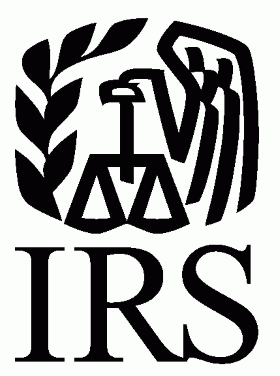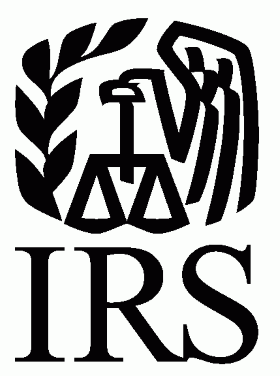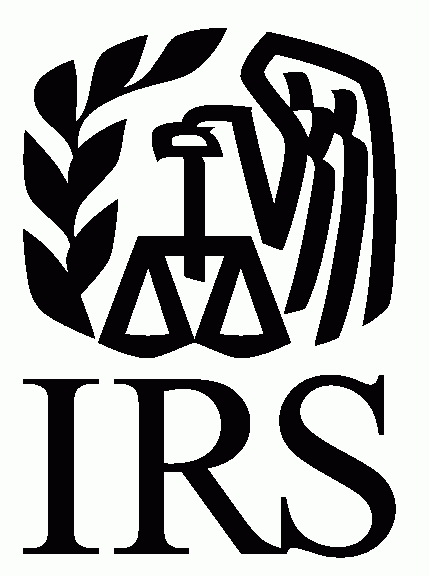The IRS has announced the 2019 standard mileage rates used for calculating deductible costs for operating an automobile for business, charitable, medical or moving purposes.
The IRS recently issued guidance on tax withholding for the coming year. The redesign of the W-4 has been tabled until 2020 after the proposed form met with heavy criticism from groups like the American Society of CPAs. The W-4 for 2019 will be essentially the same as the 2018 with the exception of changes to the “withholding allowance” terminology used in the Tax Cuts and Jobs Act (TCJA.)
The IRS Issues New Warning about New Phishing Scam
Zinner & Co. Tax Team security , cybersecurity , IRSThe Internal Revenue Service issued a warning about a fairly sophisticated new phishing scam. Phishing, a technique where a malefactor impersonates someone (in this case the IRS,) in an effort to steal sensitive information such as user names, passwords and account numbers.
The IRS has recently issued new limits on qualifying pensions and retirement related accounts (see IRS Notice 2018-83.) The new amounts, which are a cost-of-living adjustment, become effective January 1, 2019.
ALERT: Be Wary of States Circumventing the $10,000 SALT deduction limitation
Zinner & Co. Tax Team Taxes - Planning, Rules and Returns , Taxes - Individual , deductions , taxes , IRS , tax avoidance , Tax Cuts and Jobs Act of 2017Current Law:
The Tax Cuts and Jobs Act of 2017 limits individual taxpayer's state and local tax (SALT), itemized deduction to $10,000 (including real estate taxes). The previous law allowed an unlimited deduction. This change may be detrimental to many individual taxpayers who relied heavily on these deductions in the past.
State Work-Arounds:
Some states have considered "work-arounds" to combat this limitation. Select states (California, Connecticut, Illinois, New York and New Jersey, thus far) have created state
Relief for taxpayers affected by reduction of maximum deductible health savings account contributions
Zinner & Co. Tax Team IRS , health careTaxpayers who have healthcare coverage under a High Deductible Health Plan (HDHP) may qualify for tax relief from the Internal Revenue Service.
HDHPs, health insurance plans with lower premiums and higher deductibles than a traditional health plan, are a requirement for having a health savings account.
The IRS announced today that it was going to end the Offshore Voluntary Disclosure Program (OVDP) by September 28, 2018. The Service is giving taxpayers just over six months’ notice of the program closure to allow any taxpayers who wish to do so the opportunity to take advantage of the program before then.
The current program has been in place since 2014 and is, actually, a modified version of the one that was originally launched in 2012. The programs have afforded taxpayers to voluntarily resolve past non-compliance issues related to unreported foreign financial assets, as well as failures to file foreign information returns.
Where's My Refund? Impatient or important, when to call the IRS
Zinner & Co. Tax Department Brett W. Neate , IRSAccording to the IRS.gov, the IRS issues most refunds in less than 21 days, although some require additional time. You should only call if it has been:
IRS Requires Taxpayers to Validate ID
Zinner & Co. Tax Department fraud , Brett W. Neate , Taxes - Corporate & Business , Taxes - Planning, Rules and Returns , Taxes - Individual , IRSThe IRS recently announced additional requirements for taxpayers and tax professionals to verify their identities when they call as part of security efforts.
Taxpayers and professionals should have the following documents ready when they call:
- Social Security numbers and birth dates for those who were named on the tax return in question
- An Individual Taxpayer Identification Number (ITIN) letter if the taxpayer has one in lieu of a Social Security number (SSN)
- Filing status – Single, Head of Household, Married Filing Joint or Married Filing Separate
- The prior-year tax return. Telephone assistors may need to verify taxpayer identity with information from the return before answering certain questions
- A copy of the tax return in question
- Any IRS letters or notices received by the taxpayer
But, It’s My Money! What you need to know before withdrawing funds from your 401k
Zinner & Co. Tax Team Retirement Planning & IRAs , IRSMany folks faced the new year with a fresh-start mindset, new goals, and a handful of resolutions. For some, 2017 is still at the top-of-mind with credit card balance carry-overs and a loan or two. For others, the new year brings ideas of travel, home renovations, or major purchases.
Regardless of the intent, oftentimes folks think they can simply borrow or withdraw from their 401(k) to pay for these things when their bank account is not liquid. After all, the money is theirs and just “sitting” untouched. So why not tap into the account – life is short, right?
About Us

Since 1938, Zinner has counseled individuals and businesses from start-up to succession. At Zinner, we strive to ensure we understand your business and recognize threats that could impact your financial situation.
Recent Blog Posts
Categories
- 1031 Exchange (2)
- 401k (2)
- 529 plan (4)
- ABLE Act (1)
- account systems (3)
- accounting (8)
- Affordable Care Act (8)
- alimony (2)
- American Rescue Plan Act (1)
- Ask the Expert (5)
- Audit and Assurance Department (13)
- audits (8)
- Bank Secrecy Act (1)
- banks (1)
- Barbara Theofilos (6)
- Beneficial Ownership Information (1)
- Bitcoin (1)
- block chain (2)
- BOI (3)
- Bookkeeping (1)
- Brett W. Neate (28)
- budgets (1)
- Bureau of Worker's Compensation (12)
- Business - Management, Issues & Concerns (51)
- business income deduction (3)
- business succession (7)
- business travel expense (3)
- business valuation (5)
- capital gains (2)
- careers (7)
- cash flow (2)
- Child Tax Credit (2)
- Chris Valponi (8)
- City of Cleveland (1)
- Cleveland COVID-19 Rapid Response Fund (1)
- Cleveland Rape Crisis Center (2)
- college (3)
- Community (24)
- Compliance (1)
- Coronavirus (24)
- Corporate Transparency Act (1)
- COVID-19 (30)
- Credit card fraud (5)
- credit reporting (2)
- cryptocurrency (2)
- CTA (2)
- cybersecurity (16)
- dead (1)
- DeAnna Alger (6)
- death (2)
- debt (4)
- deductions (14)
- Deferring Tax Payments (4)
- Department of Job and Family Services (2)
- depreciation (1)
- Digital Tax Payment (3)
- divorce (4)
- DOMA (3)
- Economic Impact Payments (2)
- Economic Injury Disaster Loan (4)
- education (8)
- EIDL (1)
- electronic filing (4)
- Electronic Tax Payments (3)
- Emergency Working Capital Program (1)
- employee benefit plan auditor (1)
- Employee Leave (3)
- Employee or Independent Contractor (6)
- Employee Retention Credit (3)
- employment (2)
- ERC (3)
- Eric James (8)
- Estates, Gifts & Trusts (48)
- expenses (5)
- Families First Coronavirus Response Act (2)
- FASB (1)
- FBAR (1)
- FDIC coverage (1)
- Federal Assistance (4)
- filing (3)
- financial planning (8)
- Financial Planning - College (9)
- financing (3)
- Firm news (119)
- first responders (1)
- FMLA (1)
- foreign assets (3)
- fraud (38)
- FSA (1)
- fundraising (9)
- Gabe Adler (1)
- gift tax (5)
- HDHP (2)
- health care (3)
- home (2)
- home office (1)
- Howard Kass (2)
- HRA (1)
- HSA (5)
- identity theft (33)
- income (1)
- income tax (58)
- independent contractor (1)
- Inflation (1)
- Insurance (7)
- internal control (4)
- international (2)
- Intuit (1)
- investments (4)
- IRS (91)
- jobs (5)
- John Husted (1)
- K-1 (1)
- Laura Haines (3)
- Layoff (2)
- Layoffs (1)
- leadership (3)
- lease accounting standards (1)
- life insurance (1)
- LLC (3)
- Loans (2)
- longevity income annuities (1)
- Lorenzo's Dog Training (1)
- Magic of Lights (1)
- management advisory (3)
- manufacturing (2)
- Matt Szydlowski (3)
- medical (7)
- Medicare (2)
- mergers and acquisitions (1)
- Mike DeWine (2)
- Millennial Concepts (2)
- minimum wage (1)
- NAIOP (1)
- National Defense Act (1)
- non-profit reporting (10)
- non-profits (38)
- not-for-profit (26)
- OATC (1)
- OBBB (3)
- ODJFS (1)
- office (1)
- ohio (13)
- Ohio Accounting Talent Coalition (1)
- Ohio business owners (18)
- Ohio Department of Jobs and Family Services (4)
- Ohio Department of Taxation (7)
- Ohio Incumbent Workforce Training Voucher Program (1)
- Ohio Society of Certified Public Accountants (1)
- One Big Beautiful Bill (3)
- Online Tax Payment (4)
- Operations (2)
- OPERS (1)
- OSCPA (1)
- owners of foreign entities (1)
- partnerships (5)
- passwords (1)
- Paycheck Protection Program (9)
- payroll (8)
- penalties (3)
- pension (2)
- personal finance (2)
- planning (4)
- ppp (7)
- Productivity (5)
- Qualified Business Income (1)
- quickbooks (10)
- real estate (14)
- record retention (2)
- records (2)
- Reporting (1)
- Republican National Convention (1)
- Retirement Planning & IRAs (53)
- Richard Huszai, CPA (5)
- RITA (1)
- Robin Baum (6)
- RRF (1)
- S Corporation (1)
- SALT (8)
- SBA (8)
- scams (13)
- SECURE 2.0 Act (1)
- security (6)
- SharedWorks (1)
- Shutdown (3)
- Silver Linings (9)
- simplified employee pension (1)
- Small Business (5)
- SMB (12)
- Social Media (1)
- social security (4)
- Speaker Series (2)
- spouse (1)
- start ups (8)
- Stay at Home Order (3)
- Steven Mnuchin (1)
- Sue Krantz (6)
- SVOG (1)
- tangible property (1)
- tax (27)
- tax avoidance (12)
- Tax Credit (7)
- Tax Cuts and Jobs Act of 2017 (31)
- Tax Exempt (1)
- Tax Holiday (1)
- Tax Interns (2)
- tax services (28)
- taxes (45)
- Taxes - Corporate & Business (105)
- Taxes - Individual (120)
- Taxes - Planning, Rules and Returns (192)
- TechCred (1)
- technology (8)
- The CARES Act (6)
- The SOURCE (1)
- tiag (3)
- transaction advisory (2)
- Treasury Department (5)
- tuition (3)
- U.S. Department of the Treasury (1)
- U.S. Small Business Administration (6)
- Unclaimed Funds (1)
- Unemployment Benefits (4)
- Unemployment Insurance (1)
- withdrawls (2)
- withholding (6)
- Workers Comp Billing Changes (1)
- Zinner & Co. (35)
- Zinner News (32)











